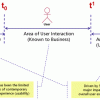Strategic advice to leverage new technologies
Technology is at the heart of nearly every enterprise, enabling new business models and strategies, and serving as the catalyst to industry convergence. Leveraging the right technology can improve business outcomes, providing intelligence and insights that help you make more informed and accurate decisions. From finding patterns in data through data science, to curating relevant insights with data analytics, to the predictive abilities and innumerable applications of AI, to solving challenging business problems with ML, NLP, and knowledge graphs, technology has brought decision-making to a more intelligent level. Keep pace with the technology trends, opportunities, applications, and real-world use cases that will move your organization closer to its transformation and business goals.
Recently Published
The accompanying Executive Report presents a user experience analysis framework (UXAF) as an all-encompassing view of a user's experience with a business that transcends the "known" areas of usability and usage-centered designs of software systems.
The Veracity Factor
Big Data: Part III -- Privacy and Security
Big Data is not only knocking at your business executives' doors, it is being pushed in their faces with dire warnings that if they don't adopt it, their business is doomed for failure. Just consider some of these recent headlines meant to get business leaders to start using Big Data sooner rather than later:
At every turn it seems leaders are being told to embrace Big Data. They are urged to make "data-driven decisions" and to mine their warehouses of all the buried data gold. The problem? This is absolutely the wrong direction to go in. In a past Executive Update, Cutter Fellow Vince Kellen suggested that the problem is that leadership isn't using their data properly.1 But the real problem I see is that we're letting the tail wag the dog.
Taming the Video Bandwidth Hog
Back in September of 2012, I discussed business video and issues associated with implementation and usage (see "Catch the Wave of Business Video").













